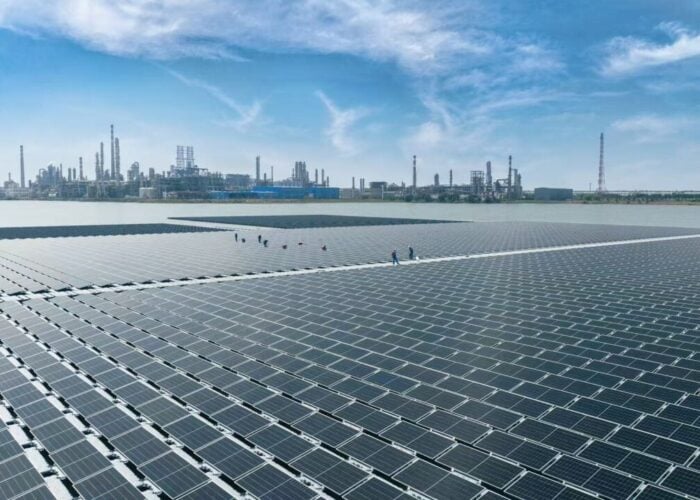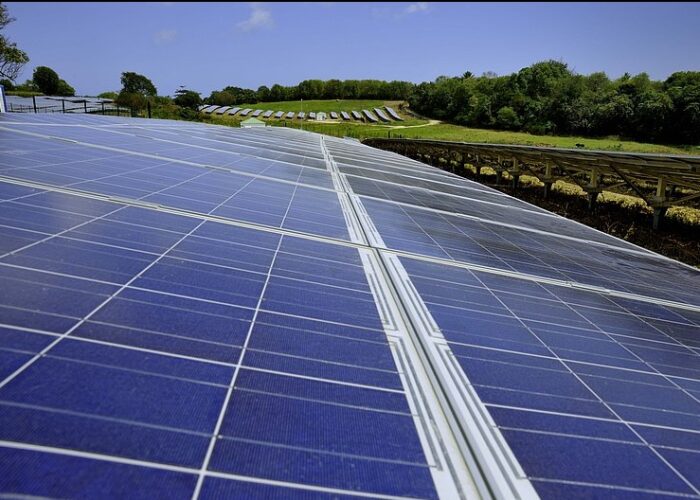Solar ingots are large blocks of silicon carefully solidified in a high purity crucible. Great care is given to the crystalline quality of these ingots since wafers extracted from them determine the performance of the finished solar cell. Producing such an ingot is extremely cash intensive and represents about a one-third of the total cost of the finished solar cell. Feedstock bears the brunt of this, but tool depreciation, sacrificial crucibles, protective gases, power as well as yield loss also contribute significantly. There is therefore a strong incentive for producers of wafers for solar applications to increase tool productivity and yield.
Unlock unlimited access for 12 whole months of distinctive global analysis
Photovoltaics International is now included.
- Regular insight and analysis of the industry’s biggest developments
- In-depth interviews with the industry’s leading figures
- Unlimited digital access to the PV Tech Power journal catalogue
- Unlimited digital access to the Photovoltaics International journal catalogue
- Access to more than 1,000 technical papers
- Discounts on Solar Media’s portfolio of events, in-person and virtual
Solar ingots going big
Since production costs scale favourably with size, ingot weights have continuously increased from 270kg a few years ago to 700kg nowadays. The ITRPV 2015 forecasts ingots to weigh almost 1,300kg within four years. In the past, this increase was mainly realised by scaling crucibles and ovens. To further maximise feedstock loads, the available crucible volume needs to be filled as efficiently as possible by filling the voids left between feedstock chunks. Empty space will collapse during melting, resulting in ingots significantly shallower than allowed by the crucible.
Just as a holiday suitcase will hold more clothes when properly packed, loading the crucible with dimensionally optimised feedstock allows an increase of the crucible loads. The key performance indicator here is the “packing ratio” defined as the ability of the feedstock to fill a given space (also called “fill factor”). The packing ratio of conventional silicon feedstock often lies below 75%, meaning that up to a quarter of the usable crucible volume is lost.
This contribution gives an overview of different types of feedstock morphologies and their impact on the packing ratio.
Loading the crucible: feedstock morphology and the packing ratio puzzle
Dependent on its purification route, solar silicon feedstock can be classified into groups of different morphology or shape: Siemens poly-Si and some metallurgical routes (UMG-Si) typically deliver randomly shaped chunks. Even if both poly-rods and UMG-Si can be cut to cylinders or bricks, this type of costly processing has not gained widespread traction. Fluidised bed reactors (FBR) on the other hand deliver small spherical granulate typically between 1-3mm in size. Finally, rejected material from earlier castings (top or side cuts as well as broken wafers) may be recycled to reduce feedstock expenses. Figure 1 pictures crucibles loaded with different feedstock types.
Oliver Graf has supervised the loading of crucible in sites on three different continents, in his position as casting coordinator at Silicor Materials. According to his experience, chunked feedstock can reach packing ratios of up to 73% material of presorted size if carefully puzzled into place. However, Graf says hasty loading will result in much poorer packing ratios and drastically reduced crucible loads. Large geometrical chunks simplify this puzzle greatly. For instance cylindrical poly-Si feedstock may be charged in a honeycomb pattern. Bricked feedstock from the UMG-Si will fit perfectly to current crucible geometries thus allowing even denser packing. Remaining voids between the rods, bricks or along the crucible walls may be filled with smaller material (see Fig 1).
This is where granulate material from the FBR route enters the picture: even though it has packing ratios comparable to chunked material, Graf highlights the great ‘flowability’ of FBR granulate allowing it to fill voids left between other feedstock types. He estimates that packing ratios of up to 80% can be reached using an optimised mix of granulate and chunked material (Figure 2). Besides increasing productivity this mixture also reduces loading times (see also REC). Graf stresses that traditional methods for settling loose material such as pressure or vibration are not applicable to loaded solar crucibles. “Damage to the crucible or its coating layer may lead to ingot cracking or cause spills of molten silicon – an excellent way to mess up your yields!” says Graf.
When asked for optimal feedstock morphology – never mind the costs – Graf pictures massive blocks of feedstock cut to match the crucible dimensions. Loading the crucible could be automated by placing the customised block into the crucible. Additional filler material such as recycling, granulate or small chunks would be used to close residual gaps along the walls. In addition to packing ratios expected to reach nearly 100%, loading times would also be greatly reduced. Furthermore, this type of loading would be an important step towards a fully automated system. Coupled to conveyer belts smoothly moving the loaded crucibles to and from the ovens, casting may at some point become a hands-off affair with minimal operator interaction, envisions Graf.
Returning to present day reality, optimising the feedstock morphology is a simple way to increase crucible loads and tool productivity. To some extent pre-sorting and puzzling of material is likely to be at least partly implemented in most productions lines. However, it seems unlikely that feedstock enabling higher packing ratios would fetch a premium on the market. This gives FBR granulate a strong economic and technical advantage as a complement to chunked material.
Further increases in crucible loads can be expected with feedstock coming either in very large chunks or with optimised geometry. This could mean stackable bricks or a single block of feedstock cut to fit the crucible dimensions. It is technically possible to provide both polysilicon as well as UMG-Si as larger geometrically shaped blocks, and in fact Elkem Solar has been doing this for years. However shaping silicon by sawing is a high-cost process. This makes the future of this kind of feedstock geometry unclear, unless cleaving techniques can be developed to reach similar results or the feedstock is directly cast in a geometry optimised for solar crucibles.
As packing ratios increase, care must be given to avoid damage to the crucible during thermal expansion of tightly packed feedstock. Further crystallisation recipes must be optimised for the larger loads. Downstream capacities (band and wire saws) must also be able to accommodate the resulting taller ingots.
Increased yields
The packing ratio is a key performance indicator for crucible loading and ingot productivity. Gains of 10% and more are realised by combination of different types of feedstock such as larger chunks and granulate material. It is estimated that an additional increase of 10% can be obtained with feedstock that is bricked or cast to match the crucible dimensions, as could readily be realised with material from the UMG-Si route.






